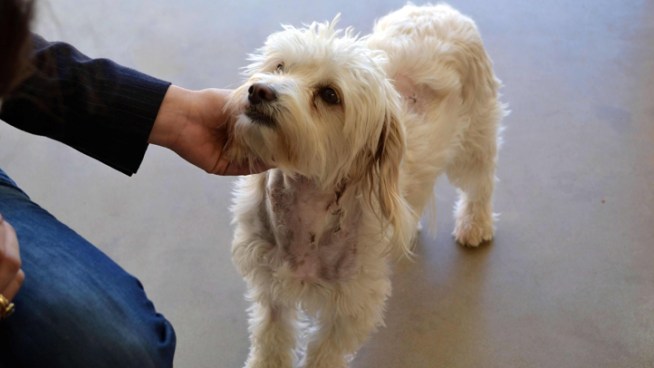 Name: Blu
Name: BluAge: 5 Years
Breed: American pit bull terrier
Owner: Howard and Jennifer
Hometown: Colonia, NJ
My Rescue Story:
Blu was surrendered to NYC Animal Care & Control in July 2009. Likely a victim of the New York City Housing Authority ban on large and "dangerous" breeds, this then 4-year-old pit bull found himself on the euthanasia list in just a few short days. In a shelter flooded with unwanted dogs, most of them pit bulls or pit bull mixes, Blu was just a number. To make things worse for him, he was overweight and had a tumor growing from his chest, two sure-fire turn-offs for potential adopters. Stray From the Heart rescue came across his perfect SAFER (Safety Assessment For Evaluating Rehoming) test results the night before he was scheduled to be euthanized and knew he was a hidden treasure. In what we like to think of as a stroke of good luck, this was the same night we called the rescue to express our interest in adopting an adult dog. Within an hour, we were signing foster care agreements and Stray From the Heart was placing a hold on a dog who was dumped at the high-kill shelter like yesterday's trash just days before. The next day, we walked Blu out of NYC Animal Care & Control and onto the streets of Manhattan. We opened our car door to get him some water and treats only to have him jump up onto the seat in one swift move and give us a look as if to say, "Let's go home, humans! I've been waiting for you to find me!" Taking the queue, we started driving home, with Blu's head resting on the center console between us the entire time. We (the three of us) haven't looked back since. These days, Blu enjoys the simple things in life: snuggles and naps on the couch; playing fetch; chewing on a good bone; and frequenting the Barker Lounge doggy daycare facility. He lives with two feline siblings and two lucky humans who will now always believe that one man's trash is another man's treasure. Blu's tumor was surgically removed post-adoption and the results came back benign. He has now achieved his ideal weight through exercise and good nutrition.
Read more: Blu http://www.thedogdaily.com/rescue/522/index.html#ixzz2JIYM7C6L










 66 PUPPIES AND DOGS RESCUED FROM PUPPY MILL
66 PUPPIES AND DOGS RESCUED FROM PUPPY MILL
